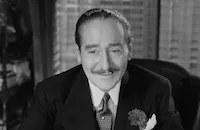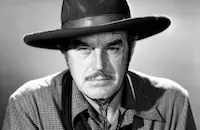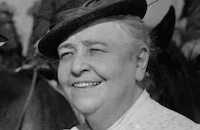Journal of a Crime

Brief Synopsis
Cast & Crew
William Keighley
Ruth Chatterton
Adolphe Menjou
Claire Dodd
George Barbier
Douglas Dumbrille
Film Details
Technical Specs

Synopsis
Paul Moliet, a playwright, is in love with Odette, the star of one of his plays. Odette has used him to further her career and now threatens to end their affair if he does not divorce his wife Françoise. Paul attempts to tell Françoise, but she is determined to hold on to her husband. She goes to the theater, shoots Odette, and escapes without being seen. A man named Costelli is arrested for the crime, but Paul discovers his own revolver backstage and confronts Françoise. She refuses to confess and although Paul stays with her, she manages to visit Costelli before he is guillotined and confesses to him that she is guilty. Because he is responsible for another murder, he gallantly confesses to hers as well. Guilt overcomes Françoise, though, and she decides to confess, but on the way to the prosecutor's office, she is struck by a car when she tries to save a child from being hit. When Françoise recovers, she has lost her memory. Paul, who has now fallen in love with his wife, realizes she has regained her lost innocence and takes her to a villa by the sea where she can recuperate and be happy.

Director

William Keighley
Cast

Ruth Chatterton

Adolphe Menjou

Claire Dodd

George Barbier

Douglas Dumbrille
Noel Madison

Henry O'neill

Phillip Reed

Henry Kolker

Edward Mcwade

Walter Pidgeon
Frank Darien

Clay Clement
Elsa Jansen
Sidney D'albrook

Paul Panzer
Maurice Brierre

Harry Woods
George Magrill
Jean De Briac
Montague Shaw
Ellinor Vanderveer
Virginia Hammond

Jane Darwell
Olaf Hytten
Harold Entwistle
Maidel Turner
Lowden Adams
Hazel Hayes
Edward Peil Sr.

Claire Mcdowell

Leila Bennett
Rosalie Roy
Lorena Layson
Marjorie Lytell

Ann Hovey
Pat Wing
George Blackwood
Renee Whitney
Crew
Maude Allen
Henry Blanke
G. Brandenburg
William Clemens
Olga Collins
Chuck Davis
Elmer Ellsworth
Leo F. Forbstein
James Gibbons
Ernest Haller
Chuck Hansen
F. Hugh Herbert
John Hughes
Charles Kenyon
Charles Lang
Art Lueker
Scotty Moore
Orry-kelly
Mr. Riley
Al Roberts
Bob Ross
Bert Six

Film Details
Technical Specs

Articles
Journal of a Crime -
By Frank Miller

Journal of a Crime -
Quotes
Trivia
The source is credited to a play onscreen, but it is actually a remake of the French film "Une vie perdue (1933)", written by the same author. Perhaps "screen play" was meant, since "screenplay" in the 30's was two separate words.
Leila Bennett (Maid) is supposed to be in this film, but she was not seen. Mollet's maid, Helene, did not look or sound like Bennett.
Notes
According to a news item in Hollywood Reporter, G. W. Pabst was originally assigned to direct. Jacques Deval's film was first called Silence de mort.















